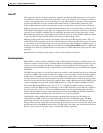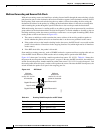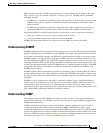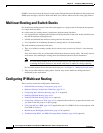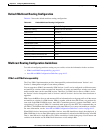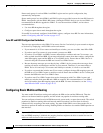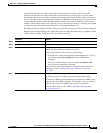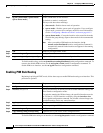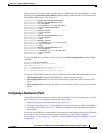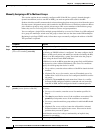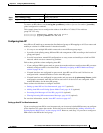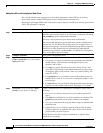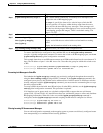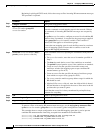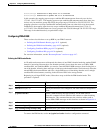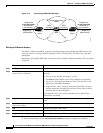
44-15
Cisco Catalyst Switch Module 3110 and 3012 for IBM BladeCenter Software Configuration Guide
OL-12189-01
Chapter 44 Configuring IP Multicast Routing
Configuring IP Multicast Routing
In this example, IP multicast routing is enabled, Switch A PIM uplink port 25 is configured as a routed
uplink port with spare-dense-mode enabled. PIM stub routing is enabled on the VLAN 100 interfaces
and on Gigabit Ethernet port 20 in Figure 44-2:
Switch(config)# ip multicast-routing distributed
Switch(config)# interface GigabitEthernet3/0/25
Switch(config-if)# no switchport
Switch(config-if)# ip address 3.1.1.2 255.255.255.0
Switch(config-if)# ip pim sparse-dense-mode
Switch(config-if)# exit
Switch(config)# interface vlan100
Switch(config-if)# ip pim passive
Switch(config-if)# exit
Switch(config)# interface GigabitEthernet3/0/20
Switch(config-if)# ip pim passive
Switch(config-if)# exit
Switch(config)# interface vlan100
Switch(config-if)# ip address 100.1.1.1 255.255.255.0
Switch(config-if)# ip pim passive
Switch(config-if)# exit
Switch(config)# interface GigabitEthernet3/0/20
Switch(config-if)# no switchport
Switch(config-if)# ip address 10.1.1.1 255.255.255.0
Switch(config-if)# ip pim passive
Switch(config-if)# end
To verify that PIM stub is enabled for each interface, use the show ip pim interface privileged EXEC
command:
Switch# show ip pim interface
Address Interface Ver/ Nbr Query DR DR
Mode Count Intvl Prior
3.1.1.2 GigabitEthernet3/0/25 v2/SD 1 30 1 3.1.1.2
100.1.1.1 Vlan100 v2/P 0 30 1 100.1.1.1
10.1.1.1 GigabitEthernet3/0/20 v2/P 0 30 1 10.1.1.1
Use these privileged EXEC commands to display information about PIM stub configuration and status:
• show ip pim interface displays the PIM stub that is enabled on each interface.
• show ip igmp detail displays the interested clients that have joined the specific multicast source
group.
• show ip igmp mroute verifies that the multicast stream forwards from the source to the interested
clients.
Configuring a Rendezvous Point
You must have an RP if the interface is in sparse-dense mode and if you want to treat the group as a sparse
group. You can use several methods, as described in these sections:
• Manually Assigning an RP to Multicast Groups, page 44-16
• Configuring Auto-RP, page 44-17 (a standalone, Cisco-proprietary protocol separate from PIMv1)
• Configuring PIMv2 BSR, page 44-21 (a standards track protocol in the Internet Engineering Task
Force [IETF])
You can use auto-RP, BSR, or a combination of both, depending on the PIM version that you are running
and the types of routers in your network. For more information, see the “PIMv1 and PIMv2
Interoperability” section on page 44-11 and the “Auto-RP and BSR Configuration Guidelines” section
on page 44-12.



